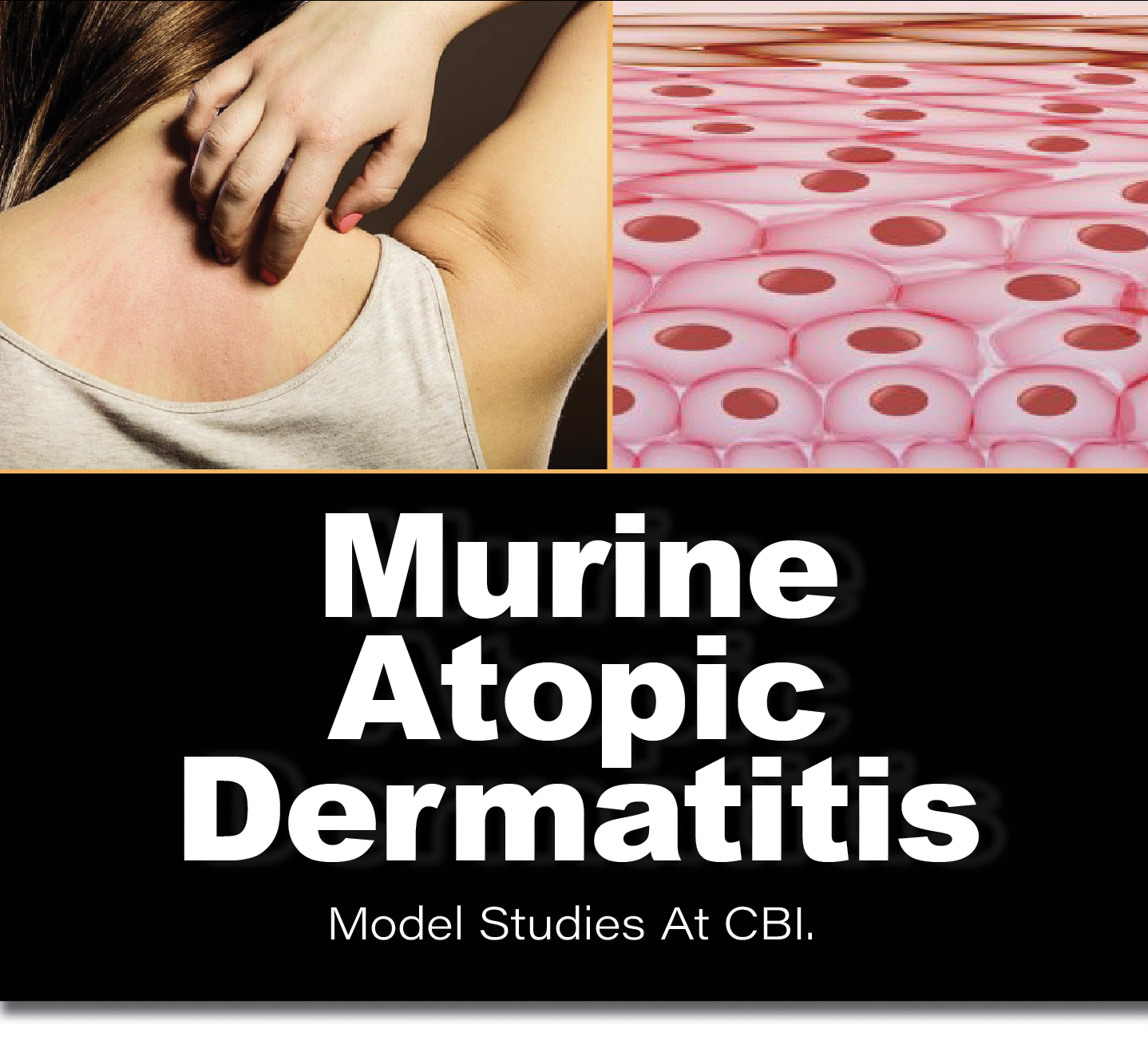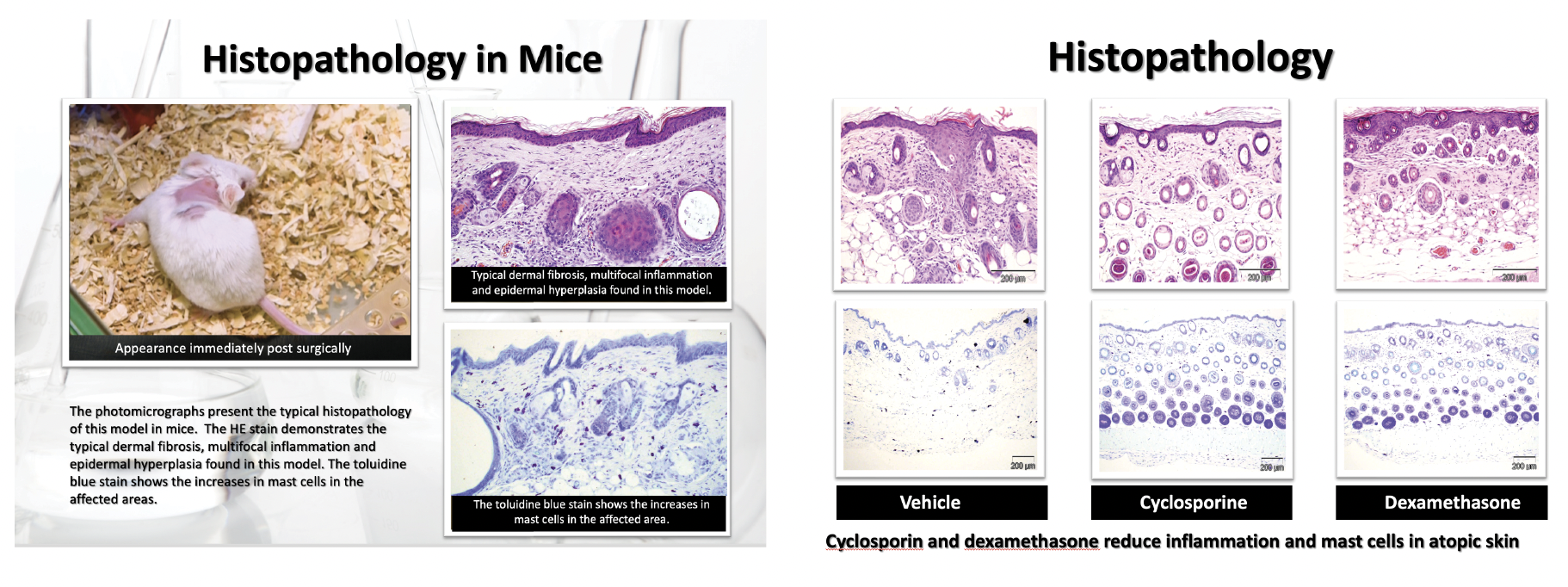
Epicutaneous sensitization with ovalbumin induction with tape stripping in mice is a useful model.
MURINE ATOPIC DERMATITIS IN MICE
Atopic dermatitis (AD) is a common allergic inflammatory disease of the skin that is characterized by intense pruritus and chronic eczematous plaques and is often associated with a personal or family history of allergic disease. In addition, it is the most common chronic skin disease in childhood, affecting an estimated 7–12% of school-aged children. Although most cases are mild and usually clear up, some patients experience severe or widespread disease that can be physically, socially, and/or emotionally debilitating. Although the underlying cause of Atopic dermatitis remains unclear, its pathogenesis is thought to involve a Th2 cell–mediated allergic inflammatory cascade.
Comparative Biosciences, Inc.’s combined dermatology and immunology expertise make us ideally suited to aid our clients Atopic Dermatitis drug discovery programs.
Atopic Dermatitis Models Overview
At CBI,
• Atopic Dermatitis (AD) is an inflammatory skin disease that frequently occurs in subjects with personal or family history of atopic disease.• Mechanical injury to the skin by scratching is an important feature of AD and has been shown to induce local expression of IL-10 in patients.• Epicutaneous sensitization with ovalbumin induction with tape stripping in mice is a useful model.• This model displays many of the features of human AD, including scaly, inflamed skin, elevated total and specific IgE, histologic infiltration of CD3+ T cells and eosinophils in the dermis, and increased local expression of mRNA for Th2 cytokines.
Basic Study Design
At CBI,
• Five groups of 10 mice per group; vehicle, test article at 3 dose levels, positive control• Housing (46 days on study plus acclimation) in dry environment
• Weekly body weights and daily clinical observations
• Induce atopic dermatitis by albumin and tape stripping at 3 intervals to back skin
• Albumin is applied to tape-stripped skin for 1 week under a Tegaderm dressing followed by a 2 week rest period. Cycle is repeated 3 times
• Daily Draize scoring for up to 1 week during treatment phase to assess macroscopic changes
• Treatment as per sponsor request – systemic or topical
• Necropsy and collect skin
• In-vitro assays as per sponsor request
• Histopathology of skin – special stains and assays as per sponsor request
• Complete report
Summary
• CBI provides a consistent, reproducible, validated tape stripping ovalbumin sensitization model in mice as a model for atopic dermatitis
• Characterized by variable dermal thickening, scaliness and reddening macroscopically
• Dermal chronic inflammation with epidermal thickening, dermal fibrosis, increased eosinophils, mast cells and mononuclear cells, and
edema histopathologically
• Dexamethasone provides amelioration of signs and histologic lesions.
Contact Comparative Biosciences, Inc. to discuss a scientific study program for all Studies and Services.
Comparative Biosciences, Inc. · Phone: 408.738.9260
– CUSTOM HYPERTROPHIC SCAR STUDIES UPON REQUEST –



